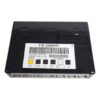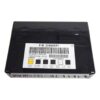Restore Full Control Over Your Vehicle’s Electronics
Are you battling frustrating electrical gremlins in your GM vehicle? Flickering lights, power windows with a mind of their own, a security system that won’t cooperate, or a dashboard lit up with warning messages? These aren’t just annoyances; they’re classic signs of a failing Body Control Module (BCM). As the central nervous system for your car’s body electronics, a faulty BCM can cause widespread, unpredictable problems. This isn’t a part you can ignore. We offer a reliable, direct-fit solution: a high-quality GM Body Control Module, pre-programmed with the latest GM software specifically for your vehicle’s VIN.
Forget the expensive trip to the dealership and the hours spent waiting for programming. We handle the complex part for you. Simply provide your VIN at checkout, and our experts will flash the module, making it ready for installation right out of the box. This saves you time, money, and the headache of coordinating with a service center. Get your car, truck, or SUV back to functioning the way it was designed to.
A Technician’s Notebook
A customer brought in their 2009 GMC Acadia last month with a laundry list of bizarre issues: the radio would turn on and off, the driver’s side power lock was intermittent, and the “Service Airbag” light was on. They’d already replaced the battery, thinking it was a simple voltage problem. My initial scan showed a dozen communication codes, all pointing to a network failure. After 20 years in this business, I know that when you see that many unrelated electrical faults, the BCM is the prime suspect. We confirmed the BCM wasn’t communicating properly. Instead of a costly dealer part and programming, we installed one of our pre-flashed units. After the quick installation and the mandatory SDM key relearn, every single issue was resolved. The customer drove away with a perfectly functioning vehicle for a fraction of the dealership’s quote.
Common Signs of a Failing GM BCM
If your vehicle is exhibiting any of these symptoms, a faulty BCM is the most likely cause. Replacing it can restore proper function and safety.
- ✔ Intermittent or non-working power windows, door locks, or mirrors.
- ✔ Erratic interior or exterior lights (flickering, staying on, or not turning on).
- ✔ The security system or keyless entry fails to work correctly.
- ✔ Dashboard warning lights (like Airbag, ABS, or Security) are illuminated for no reason.
- ✔ The horn sounds randomly or doesn’t work at all.
- ✔ Communication issues with diagnostic scan tools.
- ✔ In severe cases, a no-start condition where the vehicle’s security system immobilizes the engine.
Your Straightforward BCM Installation Guide
Installing your new GM Body Control Module is a manageable job for a confident DIYer or a quick task for any professional mechanic. While the exact location varies by model, it’s typically found under the dash on the driver’s side or in the center console area.
- Safety First: Always disconnect the negative terminal from your vehicle’s battery before starting any electrical work.
- Locate the BCM: Depending on your model (e.g., under the steering column for a Tahoe, in the center dash for an Equinox), you may need to remove a few trim panels to gain access.
- Disconnect and Remove: Carefully unplug the electrical connectors from the old BCM. They have locking tabs that need to be depressed. Once disconnected, unbolt or unclip the module from its mounting bracket.
- Install the New Module: Mount your new, pre-programmed BCM in the same location and securely plug in all the electrical connectors. You should hear a click as they lock into place.
- Perform Relearn Procedures: Reconnect the battery. This is a critical step. You will need a capable diagnostic scan tool to perform the ‘Setup SDM Primary Key in BCM’ procedure to clear the airbag light. Some vehicles may also require a Brake Pedal Position Sensor recalibration.
- Test Everything: Start the vehicle and test all related functions: power windows, locks, lights, horn, and radio to ensure everything is working as it should.
Verified Fitment for Your GM Vehicle
This module is a direct replacement for a wide range of GM vehicles and supersedes multiple part numbers, ensuring broad compatibility. Please verify your model and year from the list below. This part is compatible with original part numbers including 10382479, 15819552, 20815898, 22860591, 25892622, and many more.
Frequently Asked Questions
Do I need to do any programming after installation?
No, the main programming is done by us before we ship it. We flash the GM Body Control Module with your vehicle’s VIN and the latest software. However, you will need to perform a ‘Setup SDM Primary Key’ relearn with a scan tool to sync it with the airbag system and turn off the airbag light.
What is the ‘Setup SDM Primary Key’ procedure?
This is a security relearn procedure required by GM to ensure the new BCM and the Sensing and Diagnostic Module (SDM, or airbag module) can communicate correctly. It requires a professional-grade scan tool and is essential for ensuring the airbag system is functional.
Will this fix my specific electrical problem?
The BCM controls most of the body and convenience features. If you’re experiencing multiple, seemingly unrelated electrical issues like those listed in our symptoms section, there is a very high probability that a faulty BCM is the root cause.
What information do you need from me?
After you place your order, you must provide us with your vehicle’s 17-digit VIN (Vehicle Identification Number). We cannot program or ship the module without it.
Is this a difficult part to replace myself?
For someone with basic mechanical skills, the physical replacement is straightforward. The main challenge is having access to a scan tool capable of performing the post-installation relearn procedures. If you don’t have one, any local repair shop can complete the process for you after you’ve installed the part.
What happens if I don’t do the airbag relearn?
The airbag warning light will remain on, and more importantly, the airbag system may not deploy in the event of an accident. This is a critical safety step that must not be skipped.



